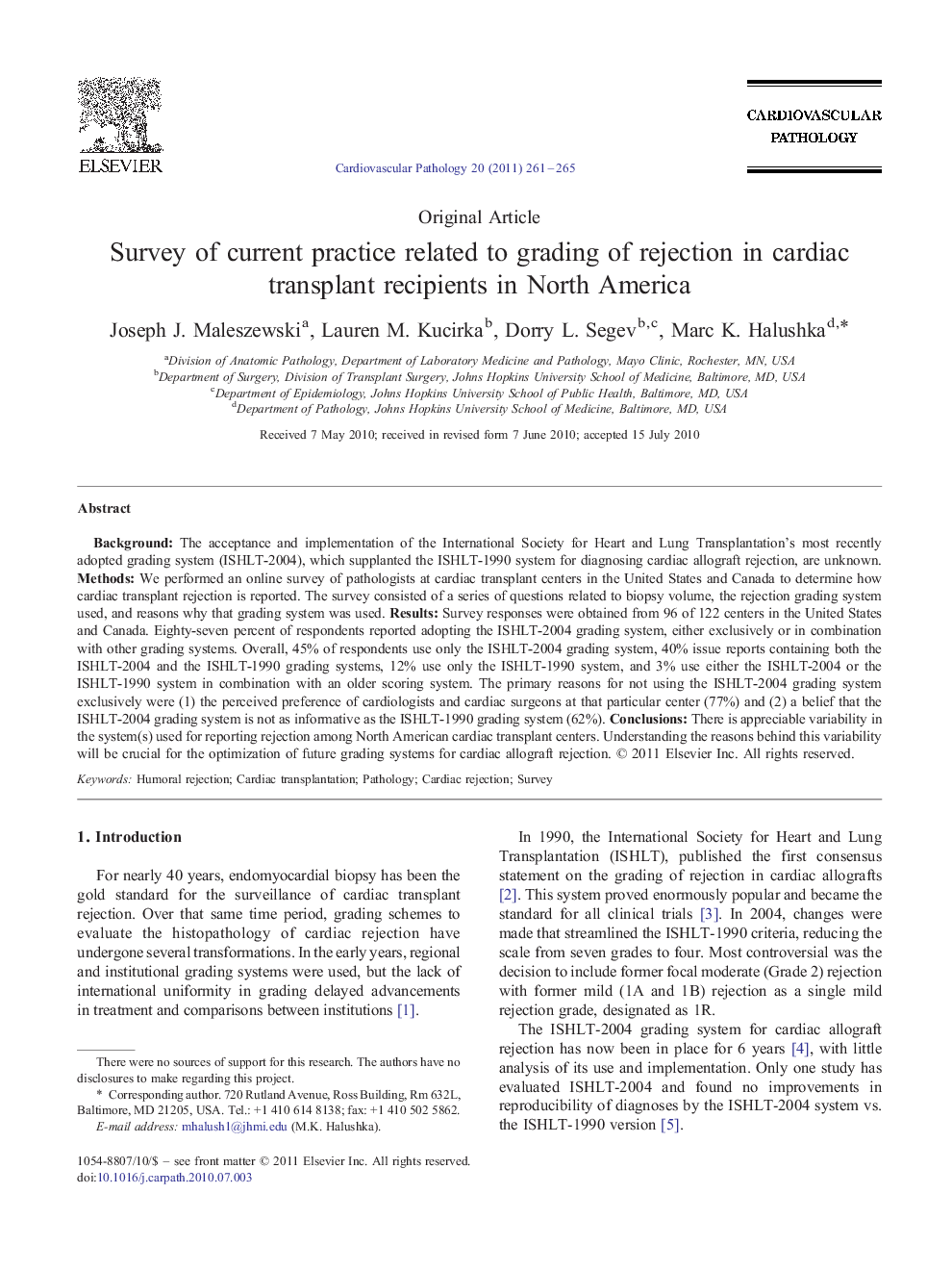| Article ID | Journal | Published Year | Pages | File Type |
|---|---|---|---|---|
| 2899316 | Cardiovascular Pathology | 2011 | 5 Pages |
BackgroundThe acceptance and implementation of the International Society for Heart and Lung Transplantation's most recently adopted grading system (ISHLT-2004), which supplanted the ISHLT-1990 system for diagnosing cardiac allograft rejection, are unknown.MethodsWe performed an online survey of pathologists at cardiac transplant centers in the United States and Canada to determine how cardiac transplant rejection is reported. The survey consisted of a series of questions related to biopsy volume, the rejection grading system used, and reasons why that grading system was used.ResultsSurvey responses were obtained from 96 of 122 centers in the United States and Canada. Eighty-seven percent of respondents reported adopting the ISHLT-2004 grading system, either exclusively or in combination with other grading systems. Overall, 45% of respondents use only the ISHLT-2004 grading system, 40% issue reports containing both the ISHLT-2004 and the ISHLT-1990 grading systems, 12% use only the ISHLT-1990 system, and 3% use either the ISHLT-2004 or the ISHLT-1990 system in combination with an older scoring system. The primary reasons for not using the ISHLT-2004 grading system exclusively were (1) the perceived preference of cardiologists and cardiac surgeons at that particular center (77%) and (2) a belief that the ISHLT-2004 grading system is not as informative as the ISHLT-1990 grading system (62%).ConclusionsThere is appreciable variability in the system(s) used for reporting rejection among North American cardiac transplant centers. Understanding the reasons behind this variability will be crucial for the optimization of future grading systems for cardiac allograft rejection.
